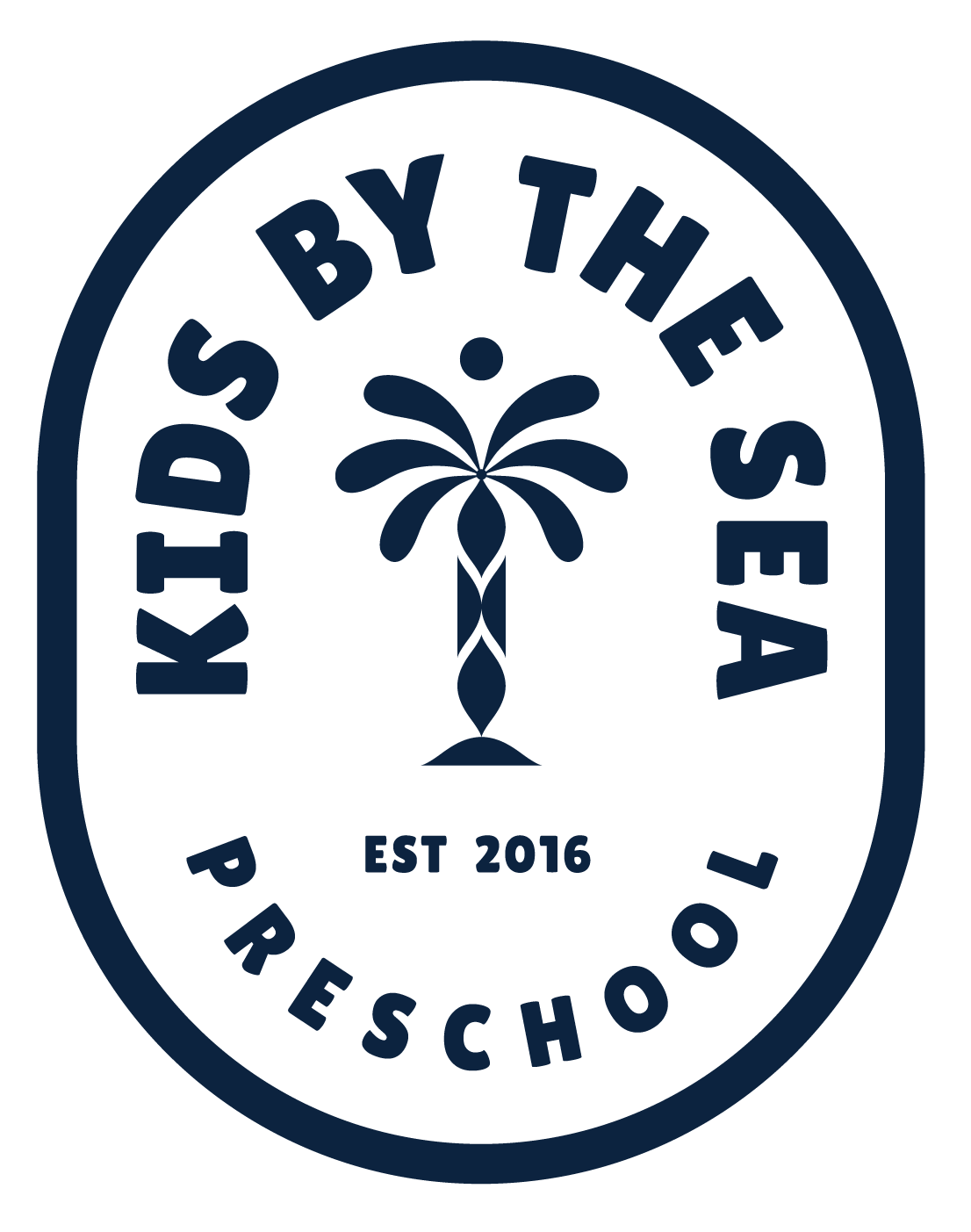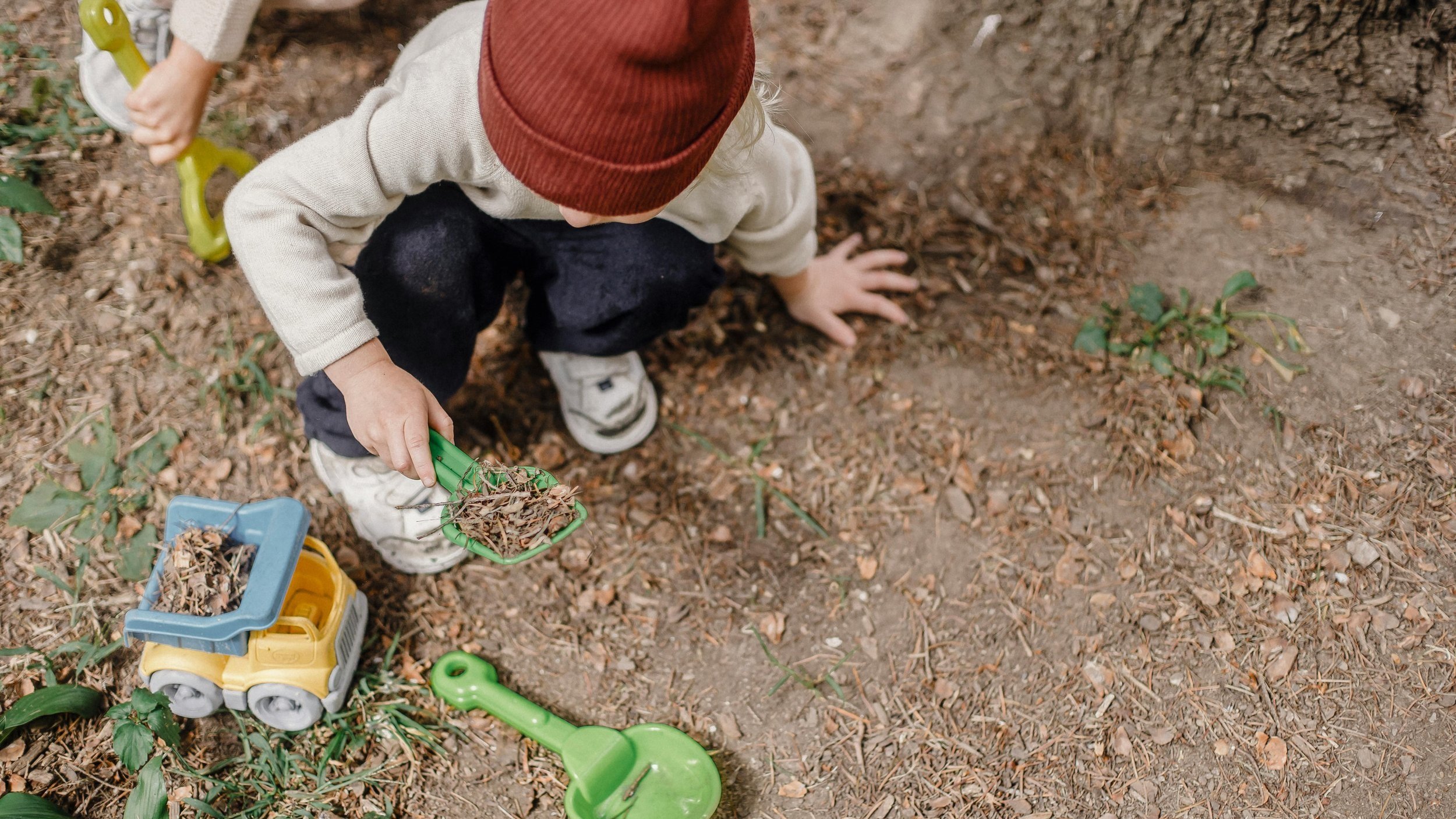Enhancing Early Childhood Development through the Outdoor Classroom Approach
A story from Amanda Manger, Kids By The Sea Owner.
I watched as David, a 2-year-old in our Guppy Room, tentatively wiggled into the stream, resting his foot on the rocks below. He carefully put his second foot next to his first. He began to lose his balance and caught himself with his hands in the water. Then he looked up at me, startled at first, but then began laughing. Slowly, he made his way down the stream. As he reached the end, he took a big jump to get out, smiled quietly to himself, took a deep breath, and whispered, “I did it!” It is hard to express exactly how beneficial this experience is for David’s development.
Watching young learners like David navigate and interact with natural elements highlights the profound impact of outdoor learning environments on early childhood development. This approach not only enhances physical agility and sensory experiences but also fosters cognitive growth, emotional resilience, and self-confidence.
What is the Outdoor Classroom?
The Outdoor Classroom concept, as articulated by Erik Nelson, revolutionizes early childhood education (ECE) by prioritizing outdoor, child-initiated play. This shift from an indoor, teacher-led paradigm to an outdoor, exploratory model addresses the critical need for children's well-being and connection to the natural world.
The Outdoor Classroom at Kids By The Sea includes a few key elements:
Each area we have indoors is also available outdoors.
Risky Play is encouraged
Everyday children need to spend large amounts of time outdoors.
Benefits of the Outdoor Classroom
Significant outdoor time is not just beneficial but essential for children. It promotes scientific learning, social interactions, physical health, and real-world connections. It also supports STEM skills and improves learning outcomes across disciplines.
Simple Ways to Create Your Own Outdoor Classroom
Creating an outdoor classroom can be both affordable and creative. Ideas include setting up an outdoor art space, a mud kitchen for dramatic play, and a building area with large loose parts, encouraging a blend of creativity, physical activity, and sensory exploration.
Conclusion: Embracing Outdoor Learning
The Outdoor Classroom offers a holistic approach to early childhood education, emphasizing the importance of nature, play, and exploration in developing well-rounded, confident, and curious learners. By integrating these principles, educators and parents can create dynamic outdoor learning environments that enrich children's lives and learning experiences.
The Value of Art and Craft in Preschool Education: A Comprehensive Guide



